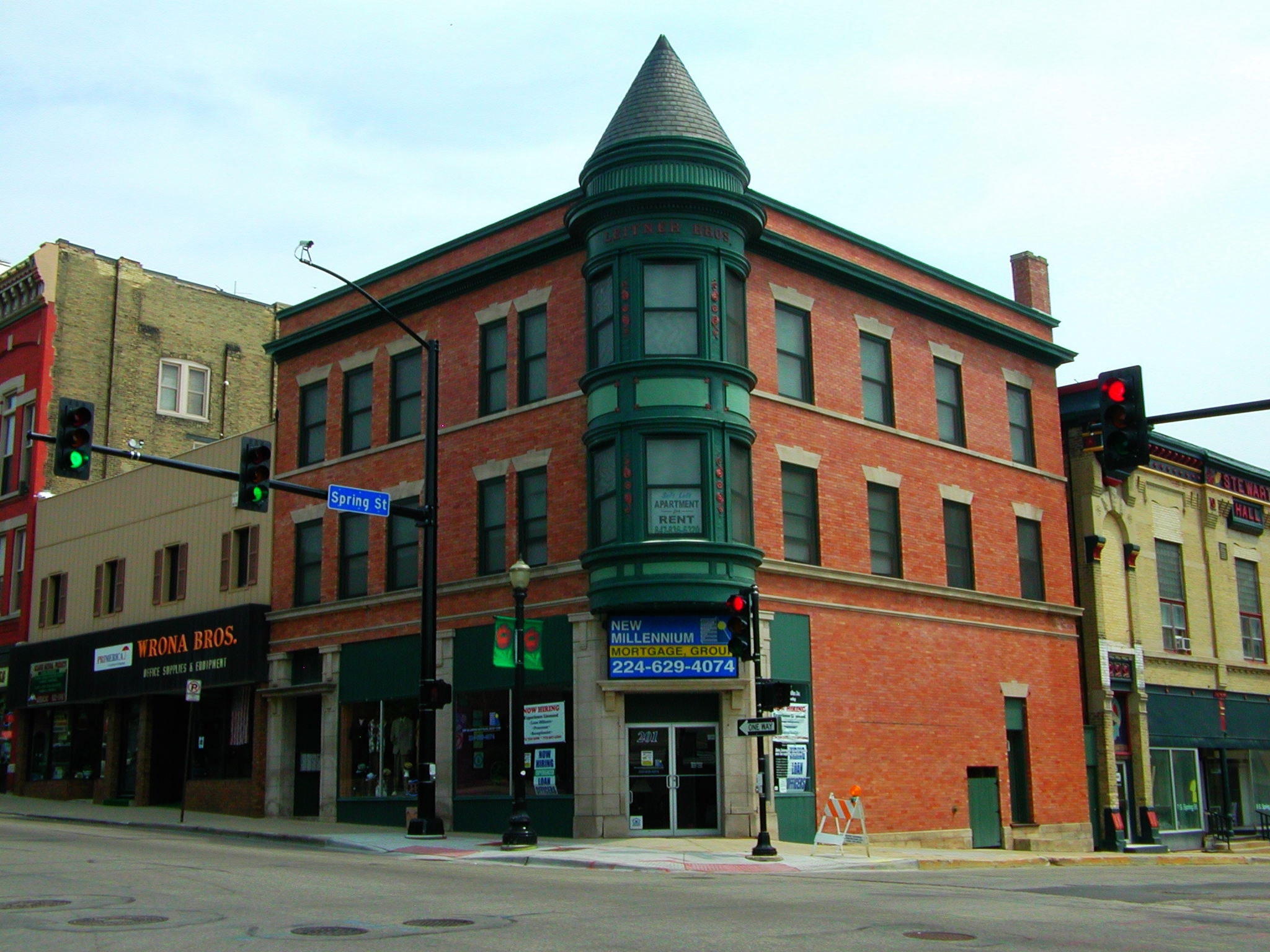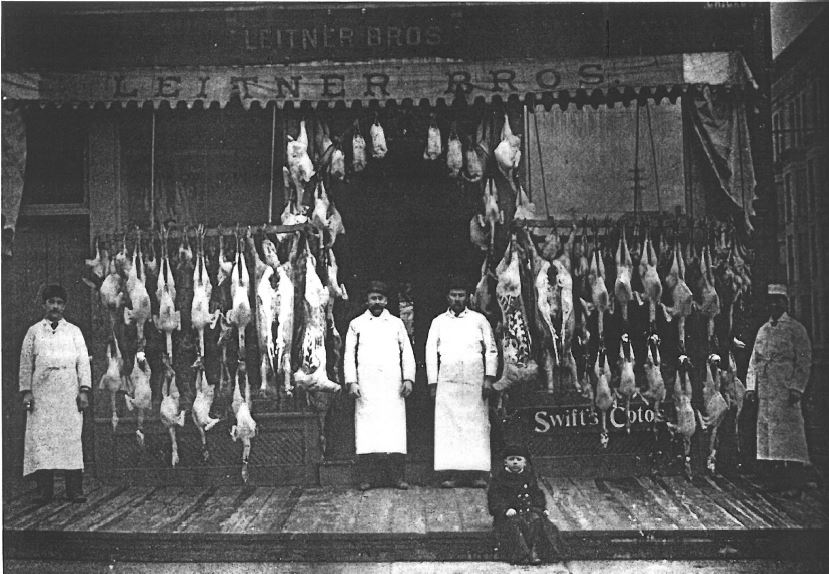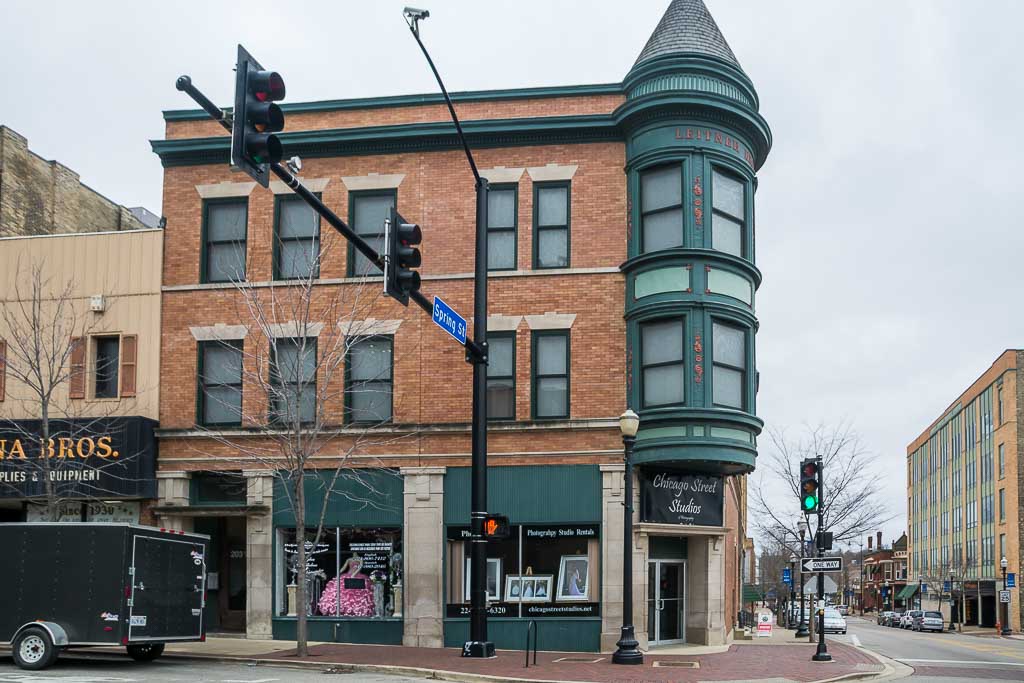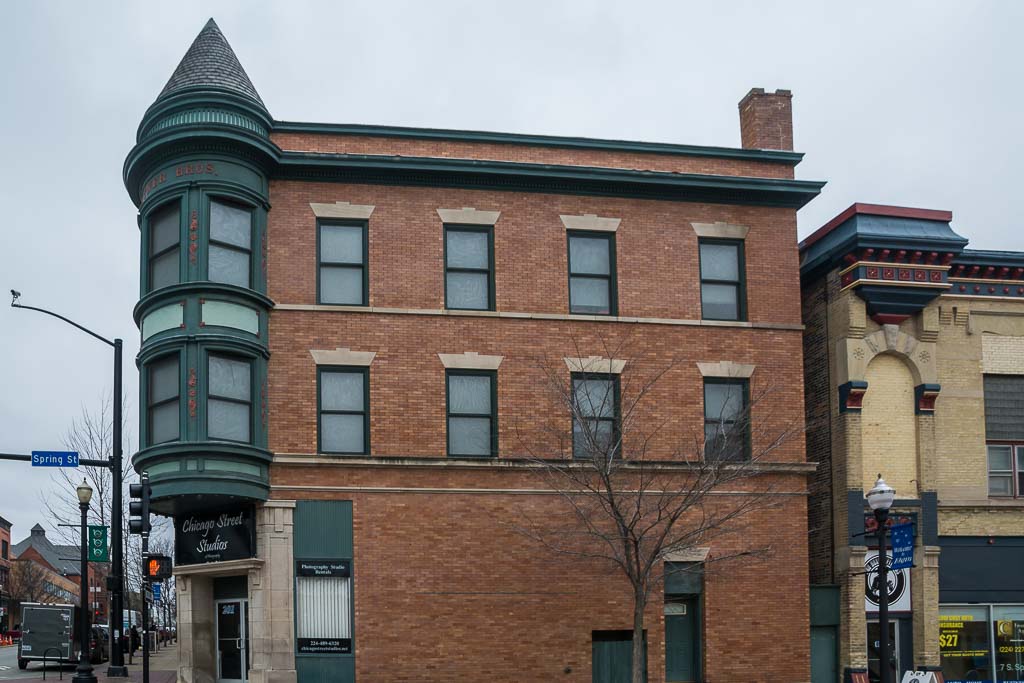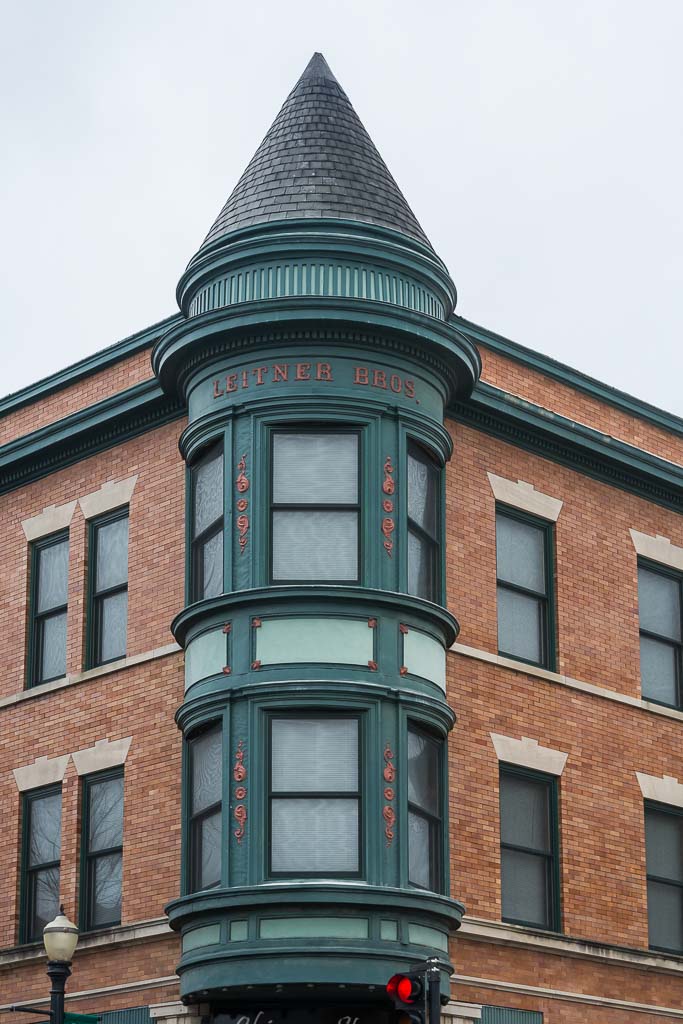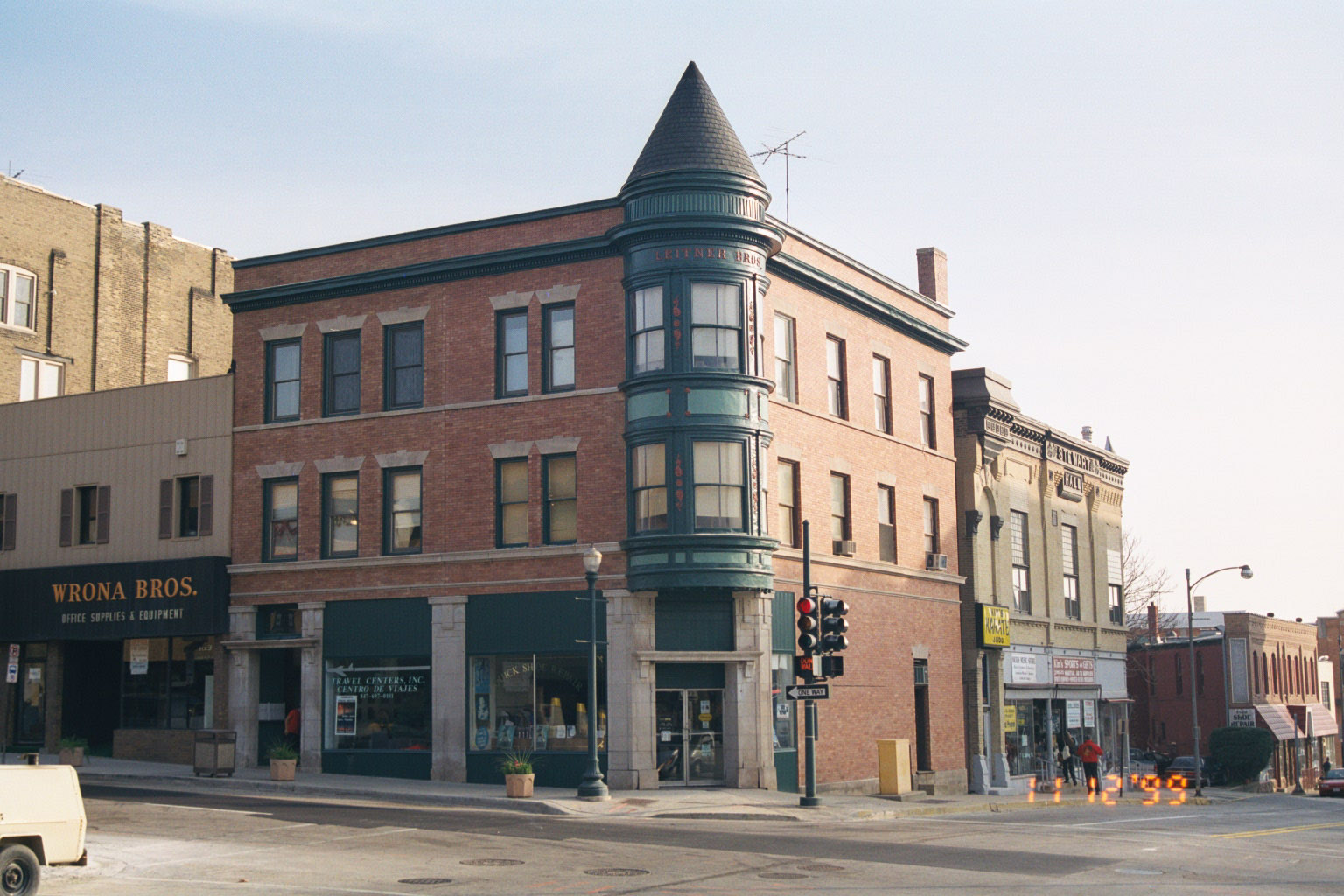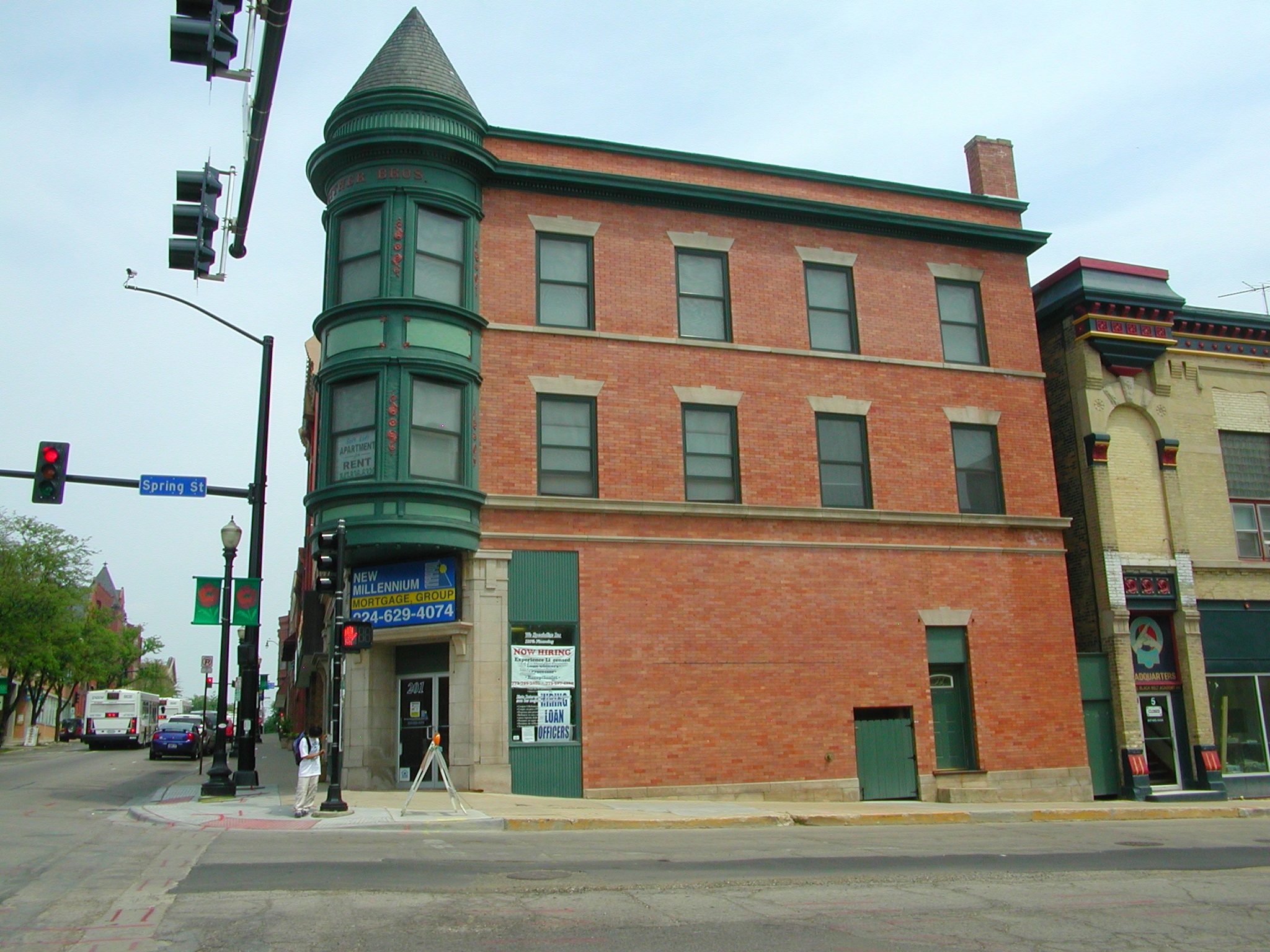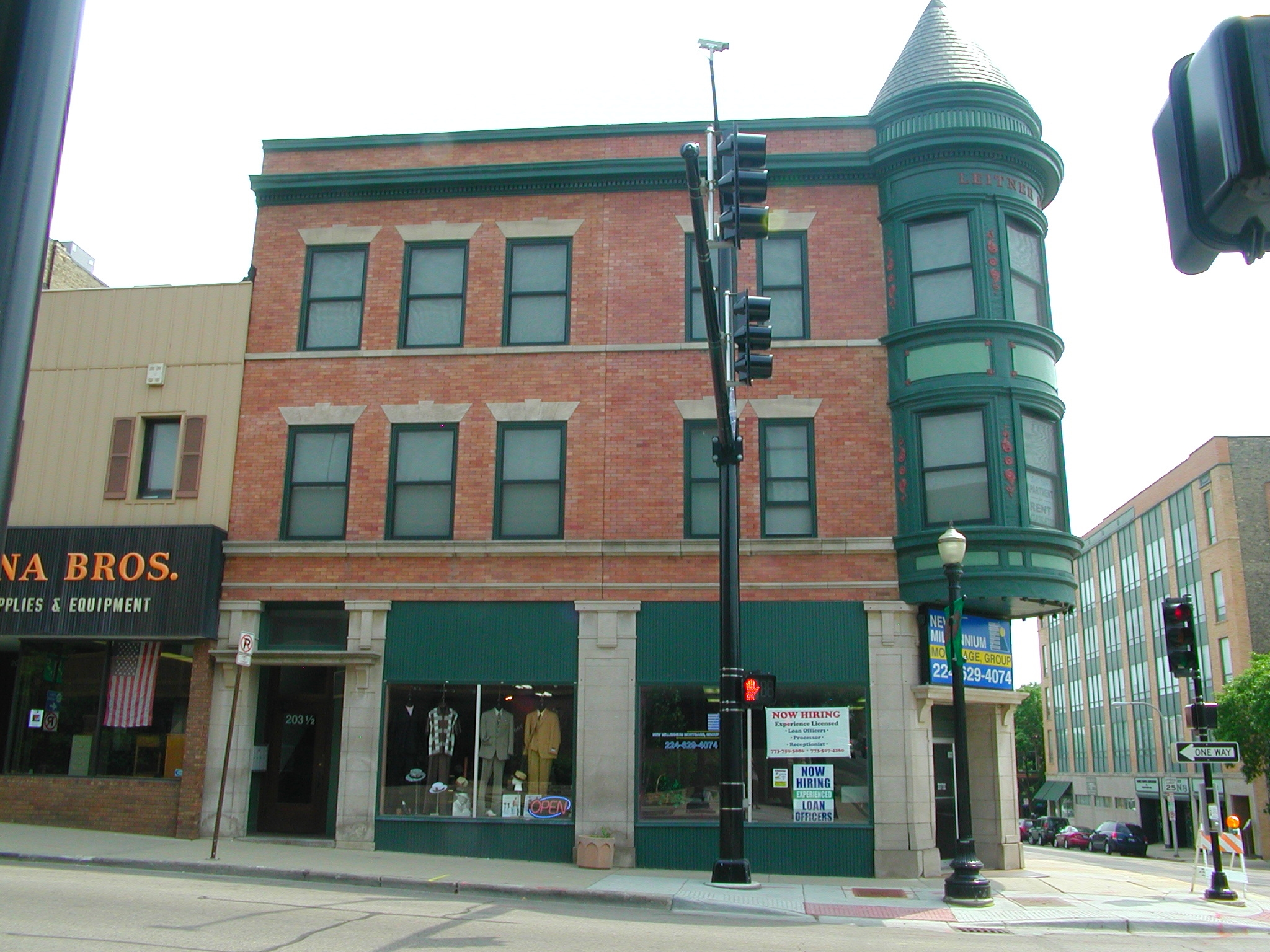LEITNER BUILDING
HISTORIC SIGNIFICANCE
The current building found at 201-203 E. Chicago Street was built for the Leitner brothers (Edward and Henry) in 1904 for their retail meat market business. They began their business in 1891 becoming very successful in a short amount of time. Their business was located in a masonry building on this same lot that was built in 1843. The original building on this lot was built for B. W. Raymond and Company. His company did not occupy the building long as it was used as a carriage factory and then a bakery and a music academy until the Leitners occupied that building. With their success, the Leitners bought the building outright and decided they would demolish it and build a new building that had all of the modern conveniences found at that time. The Leitners sought out David E. Postle, notable, local architect, to design the building. It was noted that the building was to be 24 x 62 feet with the first floor in mosaic for the meat market and the second floor would be an office with finished quarter sawed white oak. Ice chests and other necessities were built into the walls in the basement. The builder/carpenter was Smith & Wilkening The cost to build was $12,000 and was finished in 1904.
The property stayed in the hands of the Leitner family until 1950 when it was sold to the members of the Marckhoff family. From there it was put into a trust. The two stores were never used as a meat market again. Vestiges of the meat processing business remain in the basement. The street level stores have been home to various businesses over the years and the upper two floors continued as apartments.
ARCHITECTURAL SIGNIFICANCE
201-203 E. Chicago Street is a three-story, red brick building with simplistic detailing. The simplicity of the building is stunningly set off by a two-story turret topped with a conical "witch's cap." The tower contains detail work just below the witch's cap and "Leitner Bros." boldly stands out in block letters. There are curved glass, double-hung windows with floral decoration between them found at the turret. Below the turret is a bracketed shelf over the double front door. The detailed tower, on an otherwise plain structure, is a Queen Anne style feature.
Sources: 1999 Heritage Plaque Application; Audio: TextAloud
